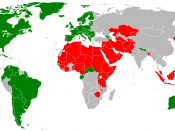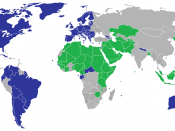Are we ever free to construct our own gender identity? To simplify the issue it would be easier to say that the world we live in is a structure that constrains and shapes our gender identity, the formation of which is kept in line with social boundaries that guide us in specific directions throughout our lives, using gender appropriation as the tool. However, if we are to inspect the issue from a more dispassionate point of view, we can actually see how specific social structures operate to influence our gender identity.
Identity is the link between the personal and the social, how we see ourselves and how others see us. Keeping this in mind, how do we acquire the criteria upon which to base these observations?
Our first and foremost structural influence is the family. A child will learn from its parents the difference between man and woman, boy and girl and identify the attributes that are associated with each term.
In this respect, a child's idea of a man would be different in a household where the male is the 'breadwinner' as opposed to the female, and vice versa. Although these gender categories are highly stereotypical, they form the basis for the child's basic understanding of gender and what it means to be male or female.
Cultural beliefs play a large part also, with the views of the parents a strong factor. For instance, in Saudi Arabia, "Some might think that women were only created to serve men, to give birth to children, and to raise them." In the same vein, and to use an extreme example, "Eskimo men use their wives to establish trading relations with other Eskimos. They will usually offer their wives sexual services to the other Eskimo man in order to cement the trading or...


